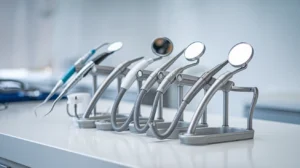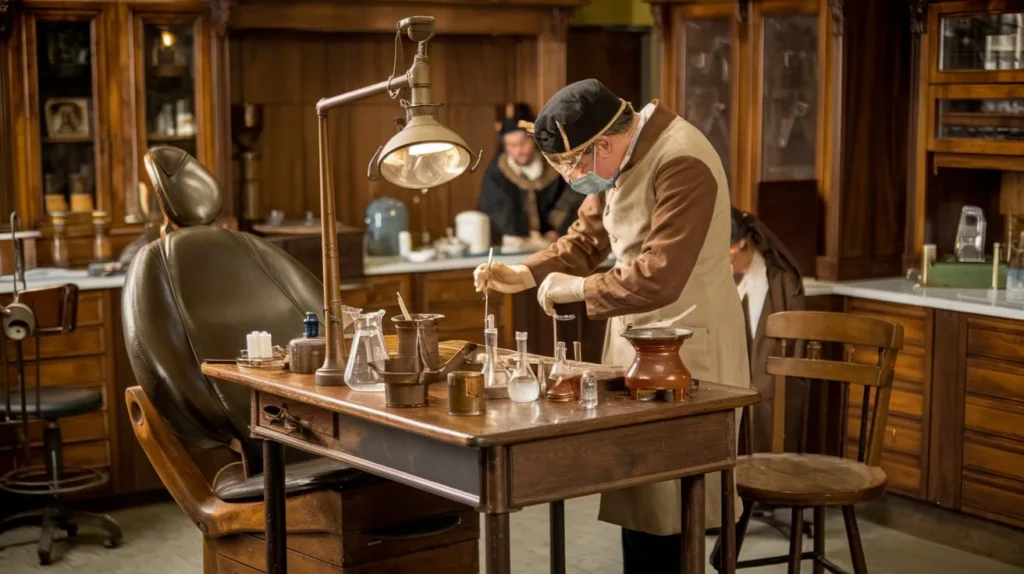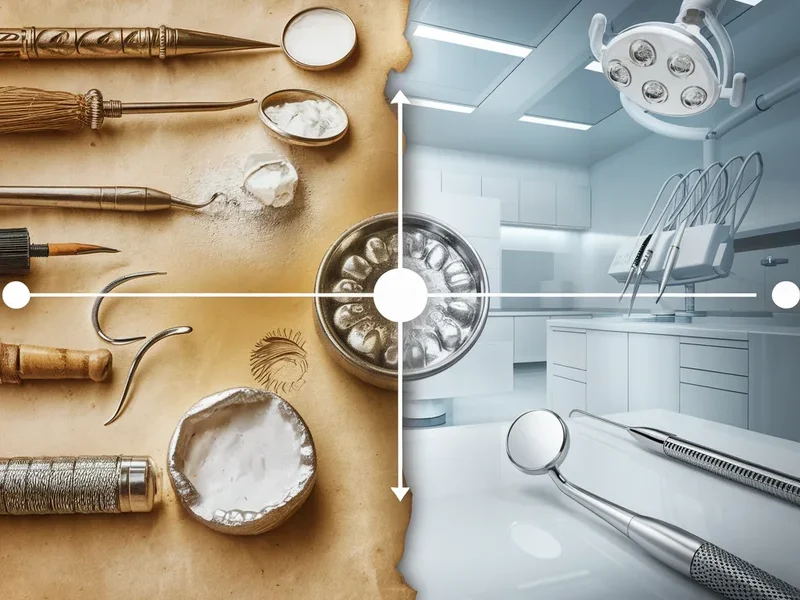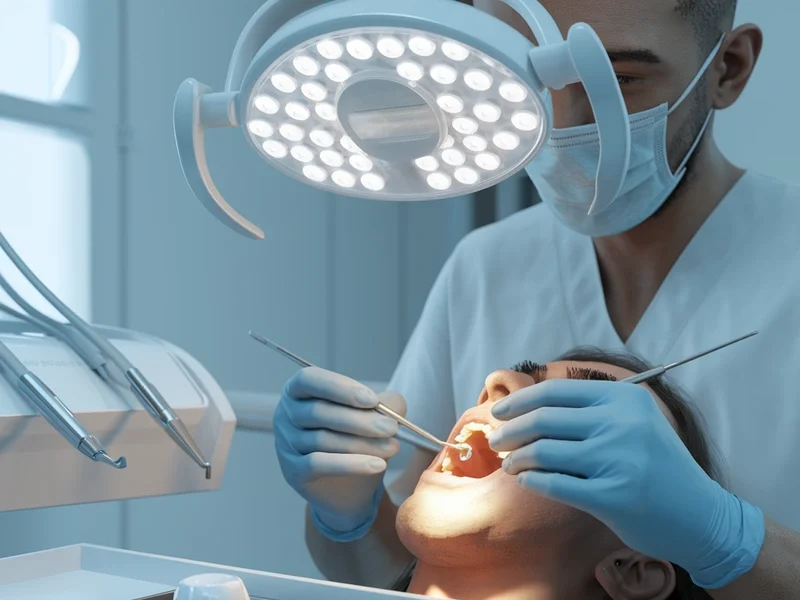
How to Choose the Best Dental Mouth Mirror for Oral Care
Picking the right dental mouth mirror might seem like a small task, but it’s actually pretty important for keeping your teeth and gums healthy. With so many options out there,

Dental amalgam has been a staple in dentistry for ages, but how did it all begin? From ancient Chinese innovations to modern-day applications, the journey of this dental material is quite a tale. It’s not just about fixing teeth; it’s a story of science, controversy, and evolution. Let’s explore how dental amalgam has shaped oral health over the years.
The roots of dental amalgam trace back to ancient China. As early as 659 AD, there are records of a silver-mercury paste used for dental purposes. This early innovation laid the groundwork for what would become a staple in dental restoration. The Chinese were experimenting with combinations of mercury and other metals, creating a material that could be used to fill cavities. This was a significant leap forward in dental care, providing a more durable solution compared to other materials available at the time.
Moving into the 19th century, Europe saw significant advancements in the development of dental amalgam. In 1819, an English chemist named Charles Bell introduced “Bell’s putty,” a precursor to modern amalgam. Later, in 1826, a French dentist, Auguste Taveau, created a paste using silver coins and mercury. This “Pate d’Argent” required heating before application but marked a significant step in amalgam’s evolution.
However, it wasn’t without issues. The material tended to expand, leading to cracked teeth and failed restorations. Despite these challenges, the groundwork was laid for future improvements.
The journey of amalgam to the United States began in the early 1830s, thanks to the entrepreneurial spirit of the Crawcour brothers. They introduced an amalgam made from powdered silver coins mixed with mercury, marketing it as “Royal Mineral Succedaneum.” Their product caught on quickly due to its affordability and ease of use compared to gold fillings. However, it also sparked controversy due to its tendency to expand and cause damage to teeth.
This marked the beginning of what would later be known as the “Amalgam War,” a debate over the safety and efficacy of amalgam that would last for decades.
Back in the late 1800s, G.V. Black, often called the “father of modern dentistry,” made a big splash with his work on dental amalgam. He came up with a formula that really stuck. His blend of 67% silver, 27% tin, 5% copper, and 1% zinc became the go-to for decades. This mix was strong enough to handle chewing and didn’t expand or contract too much, which was a huge win. But, like all things, it wasn’t perfect. Dentists found it worked best when fresh, leading to some complaints about storage.
Jumping ahead to the 1960s, there was a shift in how amalgams were made. The introduction of high copper alloys was a game-changer. These new alloys had some real perks: they were easier to work with, set faster, and had less mercury leftover after setting. Plus, they were stronger early on and didn’t change shape much. The secret sauce was adding spherical silver-copper particles to the mix, which made the whole thing more stable and reliable.

Today, dental amalgam is still around, but it’s not the same as it was back in Black’s day. Modern formulations have been tweaked to minimize mercury content and boost performance. They’re designed to be more durable and less prone to issues like tarnishing and corrosion. While some folks still worry about mercury, these newer blends are all about reducing risks and enhancing the benefits of this tried-and-true material.
Dental amalgam has been a reliable and adaptable restorative material for many years, even amidst controversies. The authors provide a review of its historical development and current status. Read more.
Back in the early days of dental amalgam use, controversy was never far away. The “First Amalgam War” in the 19th century was a heated debate among dentists about the safety of amalgam fillings. Concerns were raised over the mercury content, and some practitioners even claimed it was a public health hazard. Dentists were divided, and this division led to significant distrust in the use of amalgam.
Mercury has always been a hot topic when it comes to dental amalgam. The fear is that mercury could leach out of fillings and cause various health issues. In the mid-1920s, a German dentist, Professor A. Stock, fueled these concerns by suggesting that mercury from amalgam could be absorbed into the body, leading to serious health problems. Critics argued that mercury exposure might contribute to diseases affecting the nervous and cardiovascular systems.
Despite these concerns, many studies have shown that the amount of mercury released from amalgam fillings is typically within safe limits for most people. However, the debate still lingers, with some patients opting for alternative materials.
The “Third Amalgam War” in the 1980s was spearheaded by Dr. Huggins, who was convinced that mercury released from dental amalgams was responsible for various diseases, including multiple sclerosis and Alzheimer’s. His claims led to a surge in patients requesting the removal of their amalgam fillings, believing it would cure them of these conditions. While some reported improvements, the scientific community remains skeptical about these claims.
In summary, the controversy surrounding dental amalgam is complex and multifaceted. While some view it as a durable and effective solution, others worry about potential health risks. The dental amalgam controversy continues to be a topic of debate, balancing the benefits against the perceived dangers.
In the 1960s, the dental world saw a shift with the introduction of spherical particle alloys. These tiny, round particles changed the game, making the amalgam easier to manipulate. This innovation improved the consistency and adaptability of the material, allowing dentists to fill cavities more efficiently. The spherical shape reduced the mixing time and enhanced the amalgam’s strength, which was a big win for both dentists and patients.
The electro-chemical theory brought a deeper understanding of how amalgams interact with the oral environment. It explained how metals in the amalgam could react with saliva, leading to corrosion over time. This insight was crucial in improving the longevity of dental fillings. By tweaking the composition and processing of amalgam, researchers aimed to minimize these reactions, ensuring that fillings would last longer and perform better.
Over the years, the method of applying amalgam has evolved significantly. Here are some key advancements:
The journey of dental amalgam from its humble beginnings to the sophisticated material we use today is a testament to human ingenuity and the relentless pursuit of better dental care. Each technological leap not only improved the material itself but also enhanced the overall patient experience, making dental procedures quicker and more comfortable.
These advancements have ensured that dental amalgam remains a reliable choice in restorative dentistry, balancing performance with cost-effectiveness.
When it comes to dental restorations, dental amalgam has stood the test of time. It’s not just durable; it’s also incredibly cost-effective. Unlike some newer materials, amalgam doesn’t require a perfectly dry environment during placement, which can be tricky to achieve. This makes it a favorite for dentists working in less-than-ideal conditions. Plus, it has a unique self-sealing ability. Over time, the edges of an amalgam filling can actually improve, thanks to corrosion products that seal any tiny gaps.

In today’s dental world, amalgam is mostly used for fillings in the back teeth, where its metallic color is less of a concern. Dentists appreciate its ease of use and the fact that it can withstand the heavy forces of chewing. Here’s a quick rundown of its clinical applications:
Looking ahead, the future of dental amalgam is a bit uncertain. While it’s still widely used, there’s a push for more aesthetic materials. However, its reliability and affordability mean it won’t disappear overnight. There’s ongoing research into making amalgam even safer and more environmentally friendly, which could help it remain a staple in dental practices worldwide.
Amalgam has been around for over a century, and while new materials come and go, its resilience keeps it relevant. It’s a testament to how sometimes, the old ways are still the best ways.
Dental amalgam has been more than just a fixture in dental practices; it has seeped into popular culture. In movies and TV shows, the metallic glint of a silver filling often symbolizes a character’s age or economic background. Even in cartoons, characters with shiny smiles hint at the widespread use of amalgam. The association of silver fillings with childhood dental visits is a shared experience for many, creating a cultural touchpoint.
The journey of dental amalgam through history is fascinating. Early Chinese practices in restorative dentistry date back to around 200 BCE, utilizing silver amalgam for fillings. This highlights the historical significance of amalgam in oral medicine. The material was initially seen as a marvel of innovation, providing a durable solution for dental decay.
Over time, however, perceptions shifted, especially during the “amalgam wars” when debates about safety emerged. Despite controversies, amalgam’s reputation as a reliable and cost-effective material has endured.
The introduction of amalgam revolutionized dental practices. Before its widespread use, options for treating cavities were limited and often expensive. Amalgam offered a practical solution, allowing dentists to treat more patients efficiently. This shift democratized dental care, making it accessible to a broader population.
Over the decades, the techniques and tools for applying amalgam have evolved, but its impact on dentistry remains significant. Dentists today continue to draw on the lessons learned from amalgam’s storied past, even as they explore new materials and technologies.
Dental amalgam has not only shaped the way we approach oral health but also left an indelible mark on cultural and historical narratives. Its legacy is a testament to the blend of science and society in the evolution of dental care.
So, there you have it, the long and winding road of dental amalgam. It’s been around for centuries, starting with some pretty basic mixes and evolving into the stuff dentists use today. Sure, it’s had its ups and downs, with folks arguing about its safety and effectiveness. But despite all that, it’s still a go-to for many dentists. Why? Well, it’s tough, doesn’t cost a fortune, and gets the job done without too much fuss. As we move forward, who knows what new materials will come along? But for now, dental amalgam holds its ground, a testament to its enduring place in dental history.
Dental amalgam is a mixture used for tooth fillings, made by combining mercury with other metals like silver, tin, and copper.
Dental amalgam was created to fill cavities in teeth, providing a durable and cost-effective solution compared to gold.
The Chinese were the first to use dental amalgam, with records dating back to 659 AD where they used a silver-mercury paste.
Some people worry that mercury in amalgam can be harmful, but many studies show it’s safe for most people when used as a filling.
Dental amalgam is strong, lasts a long time, and is less expensive than other filling materials like gold or composite.
Yes, the formula has improved over the years, with innovations like high copper alloys to make it stronger and safer.

Picking the right dental mouth mirror might seem like a small task, but it’s actually pretty important for keeping your teeth and gums healthy. With so many options out there,

Dental mirrors have come a long way. From simple reflective tools to sophisticated gadgets, they play a key role in modern dentistry. With constant innovation in dental mirrors, these aren’t

Hey there, dental pros! Today, we’re diving into something super important but often overlooked—how to properly mouth mirror sterilization. If you’re in the dental field, you know these little tools
At The Surgical Kit, we are committed to providing healthcare professionals with the finest tools to ensure precision and safety in every procedure.